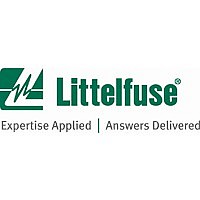P0080SCMC Littelfuse / Teccor Sidactor(R) Product, P0080SCMC Datasheet - Page 176

P0080SCMC
Manufacturer Part Number
P0080SCMC
Description
SIDACTOR MC BI 6V 400A DO-214AA
Manufacturer
Littelfuse / Teccor Sidactor(R) Product
Series
SIDACtor® SC(MC)r
Datasheet
1.P0080SCMC.pdf
(212 pages)
Specifications of P0080SCMC
Voltage - Breakover
25V
Voltage - Off State
6V
Voltage - On State
5V
Current - Peak Pulse (8 X 20µs)
400A
Current - Peak Pulse (10 X 1000µs)
100A
Current - Hold (ih)
50mA
Number Of Elements
1
Capacitance
75pF
Package / Case
DO-214AA, SMB
Lead Free Status / RoHS Status
Contains lead / RoHS non-compliant
Available stocks
Company
Part Number
Manufacturer
Quantity
Price
Company:
Part Number:
P0080SCMC
Manufacturer:
Littelfuse
Quantity:
45 000
Company:
Part Number:
P0080SCMCL
Manufacturer:
Littelfu
Quantity:
150 000
Company:
Part Number:
P0080SCMCLRP
Manufacturer:
Littelfu
Quantity:
73 500
Part Number:
P0080SCMCLRP
Manufacturer:
LITTELFUSE/力特
Quantity:
20 000
Company:
Part Number:
P0080SCMCRP
Manufacturer:
Littelfu
Quantity:
30 000
Overcurrent Protection
Overcurrent Protection
http://www.teccor.com
+1 972-580-7777
In addition to protecting against overvoltage conditions, equipment should also be protected
from overcurrent conditions using either PTCs, fuses, power/line feed resistors, or
flameproof resistors. In all instances the overcurrent protector is a series element placed in
front of the overvoltage protector on either Tip or Ring for metallic (closed loop)
applications and on both Tip and Ring for longitudinal (grounded) applications.
PTCs
PTCs are positive temperature coefficient thermistors used to limit current. During a fault
condition, heat is generated at a rate equal to I
PTC increases its resistance asymptotically until the device simulates an open circuit,
limiting the current flow to the rest of the circuit. As the fault condition drops below the
PTC’s holding current, the device begins to reset, approximating its original off-state value
of impedance.
Advantages
Because PTCs are resettable devices, they work well in a variety of industrial applications
where electrical components cannot withstand multiple, low-current faults.
Restrictions
Although PTCs are well suited for the industrial environment and in many telecom
applications, they exhibit some limitations that have prevented them from being endorsed
by the entire telecommunications industry. Limitations include low surge current ratings,
unstable resistance, and poor packaging options.
Applications
PTCs are used in a variety of applications. In addition to protecting telecommunications
equipment, PTCs are also used to prevent damage to rechargeable battery packs, to
interrupt the current flow during a motor lock condition, and to limit the sneak currents that
may cause damage to a five-pin module.
Fuses
Due to their stability, fuses are one of the most popular solutions for meeting AC power
cross requirements for telecommunications equipment. Similar to PTCs, fuses function by
reacting to the heat generated due to excessive current flow. Once the fuses I
exceeded, the center conductor opens.
Advantages
Fuses are available in both surface mount and through-hole packages and are able to
withstand the applicable regulatory requirements without the use of any additional series
impedance. Chosen correctly, fuses only interrupt a circuit when extreme fault conditions
exist and, when coordinated properly with an overvoltage protector, offer a very competitive
and effective solution for transient immunity needs.
5 - 14
2
R. When this heat becomes sufficient, the
SIDACtor
®
Data Book and Design Guide
© 2002 Teccor Electronics
2
t rating is












